Note: This website was automatically translated, so some terms or nuances may not be completely accurate.
Open Innovation in the Hida Forest?
This series follows Dentsu Inc.'s "Company Design" team as they explore the secrets behind vibrant companies with "originality." The fourth installment features a company with the unique name "Hida no Mori de Kuma wa Odoru" (Bears Dance in the Hida Forest), commonly known as "Hidakuma," based in Hida City, Gifu Prefecture.
Hidakuma, a "forest value creation company" operating with just about 10 employees in Furukawa Town, Hida City. Officially named "Hida no Mori de Kuma wa Odoru," it was founded in 2015 to enhance the value of Hida's forest resources. Not only is the company name unique, but its ventures are even more distinctive, broad, and profound. What comes to mind when you hear they combine the millennia-old "Hida no Takumi" woodworking craftsmanship with digital technology to create new wooden products and building materials? By delving into what's happening in Hida's forests today, we aim to uncover the "secret behind this vibrant company."
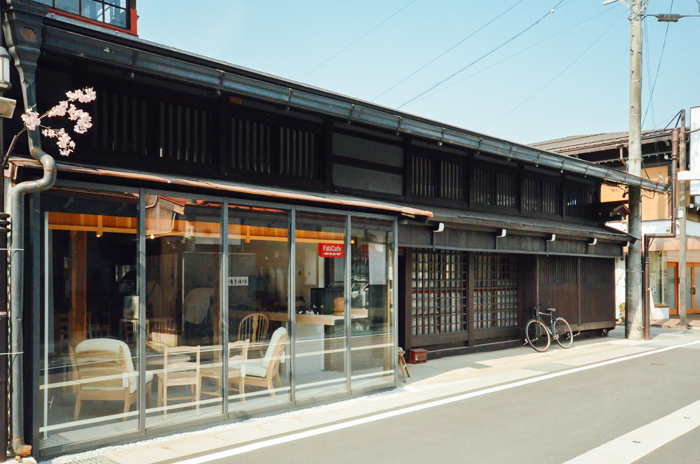
Deep within the mountains of Hida lies a company attracting creators from around the world. Why do people gather here, five hours from Tokyo?
"Our job is to be translators," says President Kotaro Iwaoka. They shine a light on broadleaf trees, previously considered "out of scope" in forestry, and challenge themselves to create unique products that leverage their distinctive properties. Hidakuma is a company continuously driving open innovation centered on local resources. Their name, "Hida no Mori de Kuma wa Odoru" (Bears Dance in the Hida Forest), embodies their vision: aiming for forests so rich that bears dance with joy.
Pursuing the company's performance and growth is, of course, essential for any business. But for whom is this growth necessary? At a time when painting a bright future for society as a whole has become difficult, President Iwaoka's words offered a lighthearted answer to that vague question lingering deep within our hearts as we work. His story was packed with methodologies for creating sustainable relationships between forests and people, set against the backdrop of Hida.
Written by: Dentsu Inc. CDC, Nobu Miyazaki
Highlighting the Individuality and Potential of "Broadleaf Trees"
"Before talking about the forests of Hida, I want you to understand the difference between conifers like cedar and cypress, and broadleaf trees like chestnut and zelkova." President Iwaoka's talk began here.
Broadleaf timber, compared to coniferous wood, is characterized by being hard, heavy, and sturdy. It boasts rich variations in growth rings and color, making it beautiful. Broadleaf forests, abundant in natural timber and offering the enjoyment of autumn foliage, are also bright and beautiful. Broadleaf timber is used for flooring and furniture, while coniferous timber, being easier to process and straight-grained, has primarily been used for house pillars and beams. Because conifers are easier to cultivate, they were widely planted across Japan. Consequently, most of the artificial forests—which make up about 40% of Japan's current forests—are coniferous.
"Conversely, broadleaf trees have been difficult to cultivate and produce systematically, making them economically unviable. Hidakuma primarily focuses on these broadleaf trees," President Iwaoka continues. "To describe the characteristics of broadleaf wood in one phrase, it's incredibly creative. Their shapes aren't uniform either; each tree possesses unique characteristics like distinct colors and grain patterns. For designers and architects, broadleaf trees are inherently fascinating materials." Naturally, utilizing this creative material with its unique individuality demands high-level technical skill. Hidakuma's core business involves facilitating collaborations between artisans in the Hida region, who possess traditional techniques, and external creators with a modern sensibility.
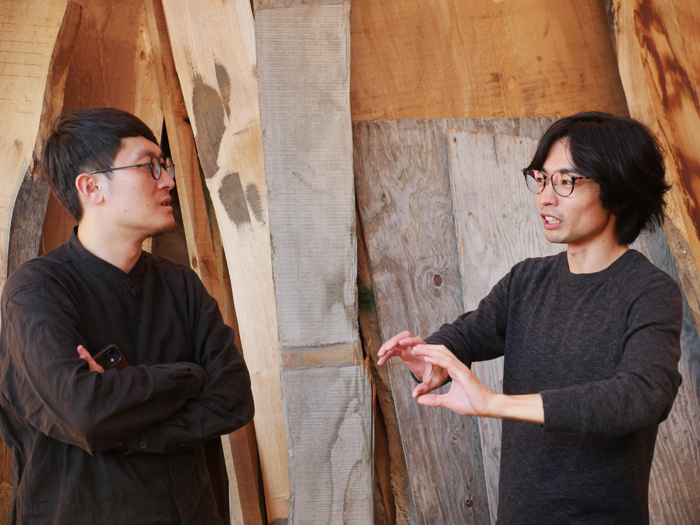
Why did a Shibuya tech cafe somehow warp into the mountains of Hida?
"Our core revenue comes from the 'Forest Timber Business,' which processes Hida forest wood into building materials and sells products like furniture. However, without the 'Regional Exchange Business,' we lose external connections and information, stifling new projects. Neither business can operate in isolation." The core of the regional exchange business is "FabCafe Hida," a space that combines a digital fabrication cafe with a guesthouse.
Its roots trace back to "FabCafe Tokyo," launched in Shibuya in 2012 for creators. It was meeting Takeshi Matsumoto, who now serves as co-CEO and specializes in total forest and forestry management, that led them to literally "stray into" the forests of Hida. 97% of Hida City is forest. Within those forests, broadleaf trees—long considered economically unviable for commercial forestry—have been left untouched. Such beautiful, creative material as wood lies peacefully asleep in this "sleeping forest." "When I learned this fact, my heart had already warped to the forests of Hida, over five hours from Shibuya."
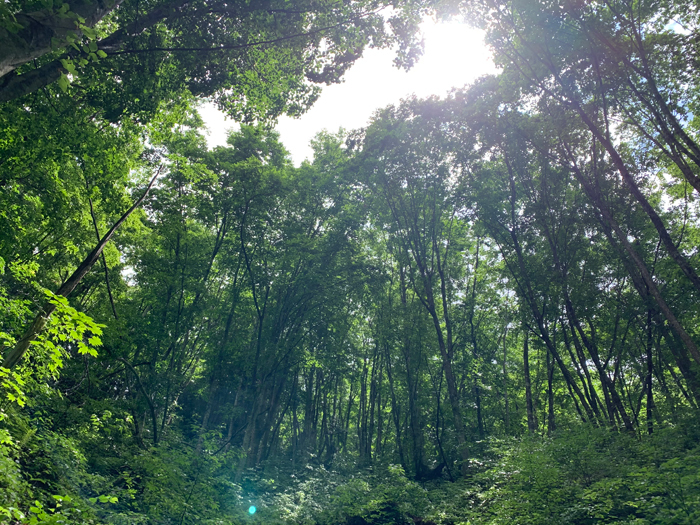
The pitch was: "Would you like to step into the forests of Hida with me?"
"My first thought was whether we could bring FabCafe's know-how and network into the Hida forest." He intuitively felt that connecting creators worldwide (artists, architects, etc.) with Hida's creators (artisans) would surely spark something exciting. He wanted more people to discover the beauty and fascination of the Hida forest and its timber, which he himself adored. "To achieve that, creating experiences where people stay and deeply engage is crucial. We planned tours to showcase the forest's charm and set up hands-on corners in workshops."
When inviting people to Hida, he asks, "Would you like to explore the forest with me?" President Iwaoka explains the intent: "Would you like to discover something there and ignite your originality?" "When you enter the forest, your individuality reacts to it, leading to that 'aha!' moment of discovery." He focuses intently on what visitors discover, then proposes ideas like, "How about this technique or application?" to initiate projects. This is the meaning behind his self-identification as a "translator."
Now, not only Tokyo-based architects and designers, but also architecture students from overseas and creators from around the world are gathering, drawn to the forests of Hida. "At first, young Tokyoites would bring foreigners into the Hida mountains. The locals were highly suspicious, wondering, 'What are they thinking?'" But as the true intent became clear, more collaborators joined. With the full backing of Hida City, which champions broadleaf tree-based town development, Hidakuma steadily brought a fresh breeze to the local industry.
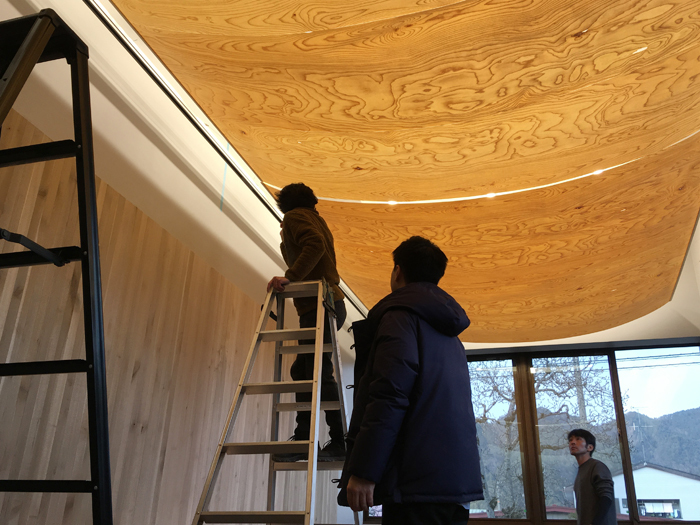
Moving forward not just for project goals, but sharing the forest's future
Craftsmen have their own areas of expertise, backed by firm conviction and skill, so clashes often occur. Even then, rather than simply saying "Just make it," Hidakuma explains the intended use of the product, and ultimately, how the success of this project will shape the future of Hida's forests, even if it involves only a specific part of the work. "That's the core of my work. How can the entire project team set a goal we can all believe in and share that vision? The most important thing isn't about me wanting to do this or trying to profit from it. It's about building a relationship where we respect each other." Drawing out the craftsmen's spirit and guiding them towards the project goal is another major task for the translator.
Many broadleaf trees like the Japanese magnolia are clear-cut and turned into wood chips. Of course, wood chips have uses—fuel, paper pulp, sawdust for cattle bedding—but with the right ideas, they could generate added value. Yes, President Iwaoka took that step. He explained that many broadleaf trees are considered "unfortunate trees," dismissed as "scrub wood" from an economic standpoint. Yet, simply forming them into sheets and laminating them onto plywood, for example, can transform them into exciting materials. Introducing such technology, originally unrooted in Hida City, reveals Hidakuma's unique creativity and network capabilities.
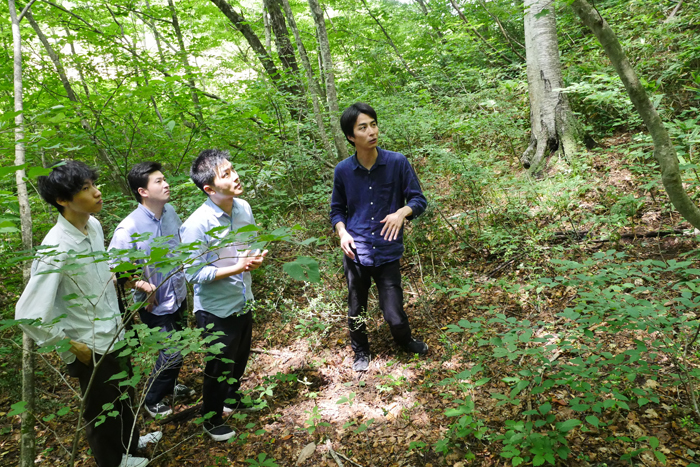
Bringing new challenges to Hida time and again is our mission
The biggest barrier for hardwoods lies in the gap between wood users (architects and furniture designers) thinking "But you can't get it!" and those harvesting the wood thinking "But nobody buys it!" Five years after founding the company, we asked President Iwaoka about his vision for future business development. "The theme for the next five years is 'tackling distribution challenges' to get more people using hardwoods." For example, establishing large collection points, digitizing each tree with 3D scanners, and creating a more efficient distribution system. He aims to further expand the business by combining forestry with cutting-edge technology.
Why has Hidakuma succeeded in building relationships with local artisans and executing projects with various external companies? "I've heard artisans say, 'Hidakuma always brings new challenges, so every time we discover something we hadn't noticed before.'" He explains that all employees consciously embrace the mindset of taking on challenges anytime, as many times as needed, and that this has become Hidakuma's DNA. External creators likely see it the same way.
President Iwaoka concluded the interview with this statement: "Our mission is simple: Do what's good for the forests of Hida!" His lighthearted delivery, while looking ahead 100 or 200 years, evoked images of the open, airy landscapes of Hida's forests.
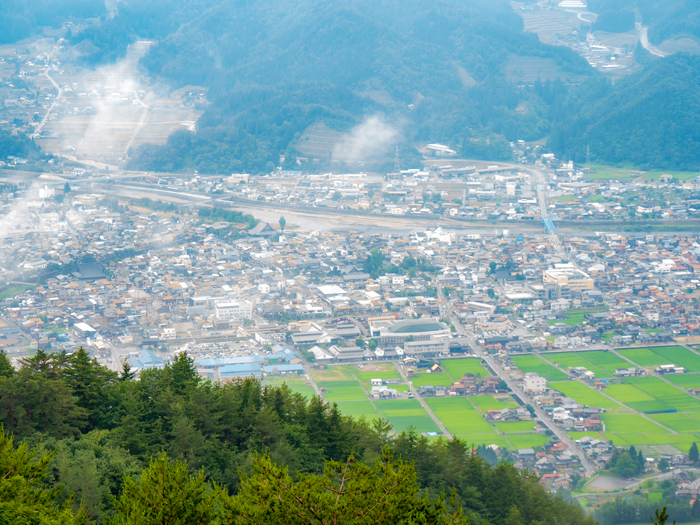
Visit Hidakuma's homepage here:
Visit FabCafe Hida's website here:
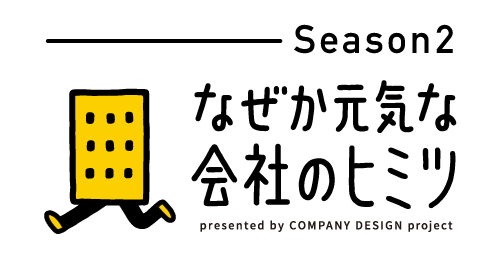
Season 2 of the series where Dentsu Inc.'s 'Company Design' team explores the secrets of 'vibrant companies' with 'originality.' Episode 4 introduced Hidakuma, a forest value creation company.
Season 1 of the series can be found here.
The "Company Design" project site is here.
[Editor's Note]
What stood out in President Iwaoka's interview were the words "challenge" and "respect." Both are terms often used as platitudes in the business world. But Mr. Iwaoka is different. Because he challenges, people gather around him. Craftspeople, local residents, government officials, and partner companies. They say, "We'll ride along with your challenge." While difficult under current circumstances, many tourists have also started visiting from overseas.
President Iwaoka wants to respond to this movement with "Respect." It is precisely because he cherishes those who share his vision, loves the town and the region, and loves the forest that there is no wavering whatsoever in all his actions.
I believe the ultimate object of President Iwaoka's respect lies in the "forest." Though often lumped together as "born and raised in Tokyo," Mr. Iwaoka grew up in Nishitama. Mountains stood close to his home, rivers flowed, and a rich ecosystem spread out. Perhaps it was this primal landscape, these primal experiences, that drew the young entrepreneur who started his business in Shibuya deep into the mountains of Hida. The essence of business is truly profound.
Was this article helpful?
Newsletter registration is here
We select and publish important news every day
For inquiries about this article
Back Numbers
Author

Miyazaki Nobu
Dentsu Inc.
Business Transformation Creative Center
Creative Planner
After joining Dentsu Inc., I leveraged my experience in magazine publishing to collaborate with editors on content development and campaign planning for clients across diverse industries. Since 2018, I have participated in the "Dentsu abic project," an industry-academia collaboration supporting regional branding, serving as its representative since 2022. I plan and drive projects that re-edit regional assets from Hokkaido to Kyushu, branding them through collaboration and co-creation with local players.



